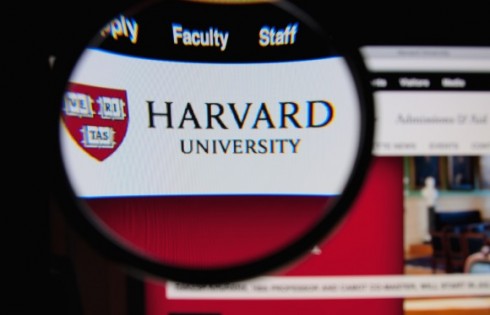Fueled by massive student debt nationwide, the Great Recession, and politicians willing to make it a priority, the so-called $10K-B.A. appears unstoppable.
Florida Gov. Rick Scott recently announced all 23 Florida College System institutions in his state that offer baccalaureate degrees plan to create four-year programs that cost no more than $10,000.
Underscoring that, several colleges in Texas are working to undertake similar measures, and Wisconsin Gov. Scott Walker is pushing the plan hard in his state while a California legislator has called for a $10,000 baccalaureate degree program for the West Coast as well.
“It is important our students can get an affordable education, and our state colleges have stepped up to the challenge to find innovative ways to provide a quality education at a great value,” Scott said when he announced the news on Jan. 28. “Our goal should be that students do not have to go into debt in order to obtain a degree.”
The movement is fueled by several factors, including “ballooning student loan debt, an impending college bubble, and a return on the bachelor’s degree that is flat or falling,” notes Arthur Brooks, president of the American Enterprise Institute and a former professor at Syracuse University, in a Jan. 31 New York Times op-ed.
Brooks cites data from the National Center for Education Statistics that the national annual average tuition for a four-year private university is nearly $33,000, and notes while the median inflation-adjusted household income fell by 7 percent between 2006 and 2011, the average tuition at public four-year colleges increased over that period by more than 18 percent.
In lobbying for the movement, Brooks said he is a product of a $10,000 undergraduate education.
“It is true that I am no Harvard Man, but I can say with full confidence that my 10K-B.A. is what made higher education possible for me, and it changed the course of my life,” Brooks states. “More people should have this opportunity.”
For a student facing immense amounts of debt after graduation, a lower tuition rate could solve many potential financial difficulties, the plan’s proponents argue.
Gov. Scott’s proposal calls for tuition cuts, but does not suggest increasing state funding to universities. Instead, present funding would be allocated to degree programs producing graduates to fill high-demand positions on the job market today.
He has been blunt in publically expressing his opinion that some degrees are worth more than others. Essentially, science, math, business, and teaching degrees would receive more attention in Florida than the humanities.
In Wisconsin, Walker said in a November speech that he preferred to think of it as making “investments that are driven off of performance.”
“We’re going to tie our funding in our technical colleges and our University of Wisconsin system into performance and say, ‘If you want money, we need you to perform,’ and particularly in higher education, we need you to perform not just in how many people you have in the classroom,” Walker said. “In higher education, that means not only degrees, but are young people getting degrees in jobs that are open and needed today, not just the jobs that the universities want to give us, or degrees that people want to give us.”
But critics contend such a policy on funding overlooks the value of a liberal arts education and the benefits of training in the humanities. They point to many studies have proven that liberal arts programs produce well-rounded students who often have better communication skills, which aid them in the job market, regardless of whether they were trained for a specific trade.
Many university faculty members have also voiced concern that educational quality would inevitably suffer. If colleges are expected to slash tuition costs without receiving more state subsidies, the cuts will have to be made elsewhere, they note. What’s more, cheaper tuition will not necessarily result in better education, and perhaps the difference will not be noticed until it is too late, they argue.
The $10,000-B.A. plans have been proposed by Republican politicians, and Democrat critics have been quick to point out their weaknesses.
For example, Scott’s proposal has been dubbed the “Walmart of Education.”
But politicians on both sides of the aisle have hopped on the cheaper-college bandwagon.
The 2012 Republican platform stated that “public policy should advance the affordability, innovation, and transparency needed to address all these challenges and to make accessible to everyone the emerging alternatives, with their lower-cost degrees, to traditional college attendance.”
Meanwhile, President Barack Obama’s administration has begun exploring ways to make college more affordable for all students, including a bill he signed into law last summer that kept student loan interest rates from doubling.
How everything plays out remains to be seen. But as Thomas Lindsay of the Texas Public Policy Foundation states in his “Anatomy of a Revolution? The Rise of the $10,000 Bachelor’s Degree” report, published in September, the Democrat’s platform of keeping student loan interest rates low won’t cut it anymore.
“Until now, the debate over how best to address the crisis of runaway tuitions has produced calls to action on two fronts: lowering interest rates on federal student loans to enable students to pay more, and/or asking taxpayers to pay more through increasing state subsidies to higher education,” Thomas states. “But the $10,000 degree stands as a new model, and as a challenge. For the first time, the college-affordability crisis is being approached through focusing us on how institutions might lower costs to students, parents, and taxpayers.”
Fix contributor Valerie Taylor is a student at Wheaton College.
Click here to Like The College Fix on Facebook.
IMAGE: SLU Madrid Campus/Flickr




Please join the conversation about our stories on Facebook, Twitter, Instagram, Reddit, MeWe, Rumble, Gab, Minds and Gettr.